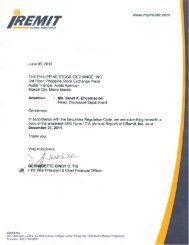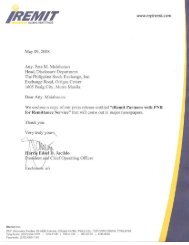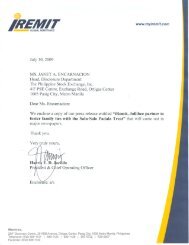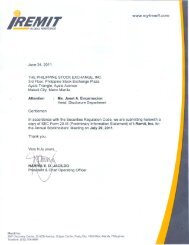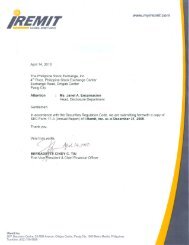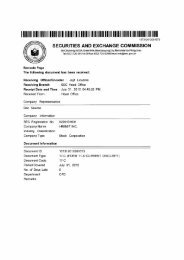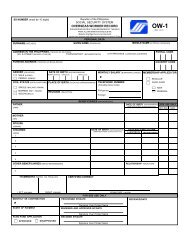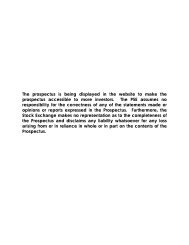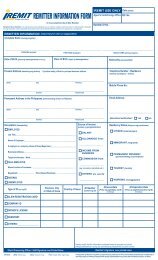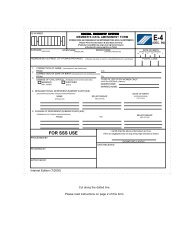SEC Form 20-IS - iRemit Global Remittance
SEC Form 20-IS - iRemit Global Remittance
SEC Form 20-IS - iRemit Global Remittance
You also want an ePaper? Increase the reach of your titles
YUMPU automatically turns print PDFs into web optimized ePapers that Google loves.
Foreign Currency Risk<br />
Foreign currency risk is the risk to earnings or capital arising from changes in foreign<br />
exchange rates. It is the Group’s policy that all daily foreign currencies, which arise as a<br />
result of its remittance transactions, must be traded daily with bank partners only at<br />
prevailing foreign exchange rates in the market. The daily closing foreign exchange rates<br />
shall be the guiding rate in providing wholesale rates and retail rates to foreign offices<br />
and agents, respectively. The trading proceeds will be used to pay out bank loans and<br />
other obligations of the Group.<br />
Cash Flow Interest Rate Risk<br />
Interest rate risk arises from the possibility that changes in interest rates will affect future<br />
cash flows of financial instruments.<br />
As of March 31, <strong>20</strong>12 and December 31, <strong>20</strong>11, the Group’s exposure to cash flow<br />
interest rate risk is minimal. The Group’s policy is to manage its interest cost by entering<br />
only into fixed rate short-term loans from banks.<br />
Fair Value Interest Rate Risk<br />
Fair value interest rate risk is the risk that the fair value of a financial instrument will<br />
fluctuate due to changes in market interest rates.<br />
The Group accounts for its debt investments at fair value. Thus, changes in the<br />
benchmark interest rate will cause changes in the fair value of quoted debt instruments.<br />
There is no impact on the Group’s equity other than those already affecting the profit or<br />
loss.<br />
Equity Price Risk<br />
Equity price risk is the risk to earnings or capital arising from changes in stock exchange<br />
indices relating to its quoted equity securities. The Group’s exposure to equity price risk<br />
relates primarily to its investments in equity securities.<br />
The Group’s policy is to maintain the risk to an acceptable level. Movement of share<br />
price is monitored regularly to determine impact on its consolidated balance sheet.<br />
Liquidity Risk<br />
Liquidity or funding risk is the risk that an entity will encounter difficulty in raising funds to<br />
meet commitments associated with financial instruments.<br />
The Group’s objective is to maintain a balance between continuity of funding and<br />
flexibility through the use of short-term debts. In addition, the Group maintains credit<br />
facilities with local banks.<br />
24



